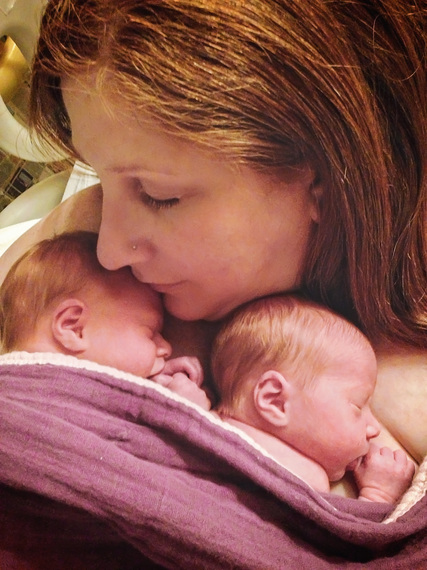I have worn many hats in my life but the one I take most seriously is my "mommy beret." The decisions I make on my children's behalf can impact their whole lives, and the responsibility of it all sometimes overwhelms me.
When I found out I was pregnant with my son a little over three years ago, I decided after much discussion and research to proceed with a midwife. I don't remember much from our first appointment other than we talked a lot about family history and that the office was suffocatingly warm. I also remember that among the many beautiful pictures of the children the practice had ushered into the world, there were pamphlets about cord blood banking. Scores of them. They were irresistibly attractive and looked important, so I picked up a few to bring home to read.
Since I have always devoured information about health conditions, I was surprised that these brochures listed diseases I had never heard of! It titillated me to learn about something new, but terrified me when I realized how little I knew about the dangers awaiting my unborn child the moment he left the warmth of my womb. These unpronounceable diseases were surely silent death sentences. I determined to learn more to protect my family.
My husband and I researched cord blood banking to the best of our ability. We didn't anticipate how complex the issue was, but early on we discovered two indisputable facts: that there is tremendous value to banking cord blood, and that private banking is not the only option. We learned that we could donate the cord blood to a public cord bank at no cost to us.
After much deliberation, we decided to donate our son's cord blood to the Carolinas Cord Blood Bank, which is affiliated with Duke University. Some of the world's most cutting edge stem cell research is taking place there and they made the donation process incredibly easy. They sent us a free mail-in kit to donate to their bank, and after our midwives completed a 20-minute online registration, we were good to go. I will never know whether our son's donation met the stringent FDA requirements to be entered into the National Marrow Donor Program (NMDP) registry called Be The Match, but I hope it did. And if not, then there's a good chance that his blood went to research.
Public banking was the best decision for our family at the time. But that was three years ago and things are different now. I was expecting twins this spring and realized their cord blood volume would be too small to meet public bank standards. Our only remaining options were private cord blood banking or disposing of the cord blood as medical waste. Since we knew from before that cord blood is valuable, we took a closer look at private cord blood banking and the efficacy of the public cord blood registry to decide what to do.
We found out that, since we are not racially or ethnically diverse, we would stand a good chance of finding a donor match in the public registry. We also discovered that our children's own cord blood could not be used for themselves for most diseases treatable by cord blood transplants and would only have a 25 percent chance of helping a sibling. (If the twins end up being identical they will be perfect matches for each other, but if either gets sick with an inherited condition then the other's cord blood will be assumed to contain the disease). This means that the chances of finding a transplant match are better with the public registry than with a family bank!
However, research is underway that could tip the balance of whether and where to donate. For one, researchers are working on ways to do more with less cord blood so that the smallest amount of baby cord blood could be used for transplants of full-grown adults one day. This could encourage parents to save their child's cord blood, because public banks throw out most of the cord blood donations they receive. Just as crucially, research is advancing on treating cerebral palsy, autism, diabetes, heart disease, and many other relatively common diseases with cord blood. Families that have their own cord blood in storage have raw material ready for these therapies. If successful, and I don't think this is an exaggeration, cord blood could become a modern miracle that saves untold lives and improves the quality of life for practically everyone.
In spite of all its potential, 95 percent of cord blood is simply thrown out. Sadly, we had to join this statistic. With public donation off the table this time around, and private banking beyond our financial reach, we regretfully disposed of our twins' cord blood. What I don't regret is the time and effort I spent educating myself. I feel satisfied that I made a conscious decision, acted responsibly on our children's behalf, and earned a star on my "mommy beret."
This article first appeared on Parent's Guide To Cord Blood.
